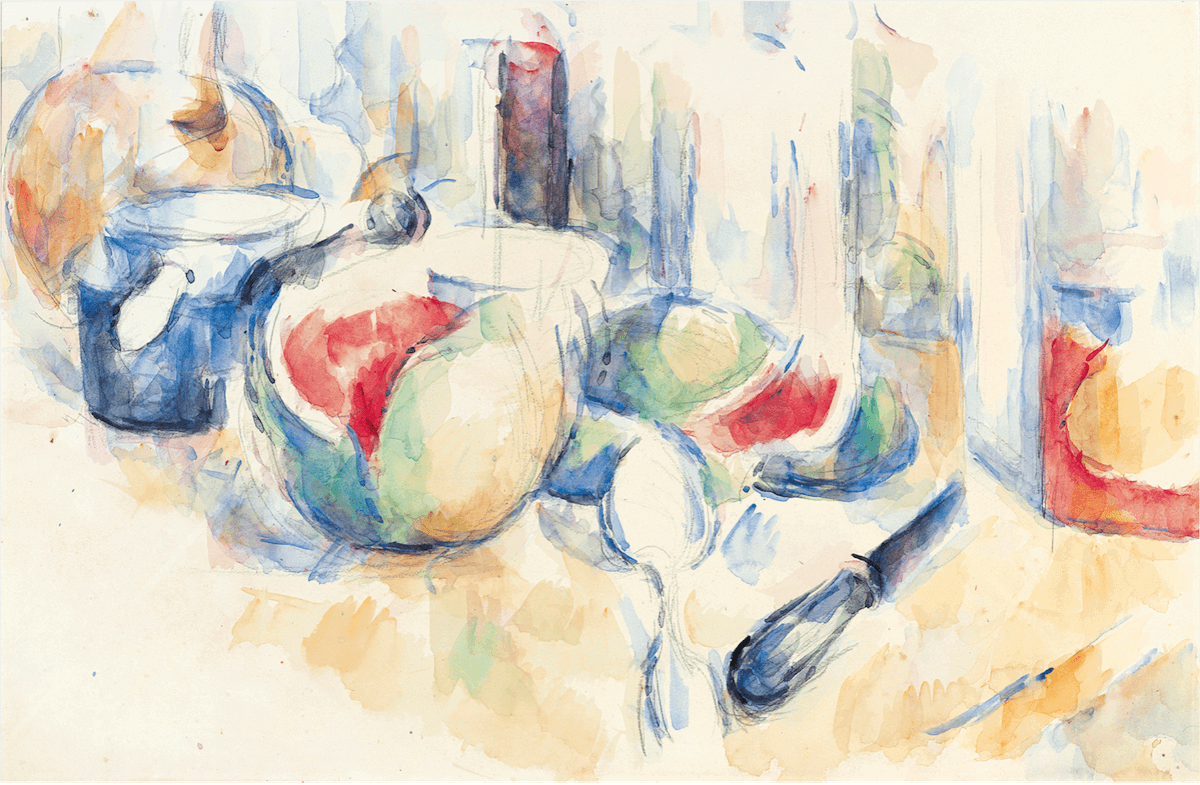A 1979 article by Éric Michaud recently republished in NonSite.
Michaud writes: “It would be wrong, then, to look for a rational convention in Cézanne’s painting. Émile Bernard only wanted to see in it the essence of things; [Lawrence ] Gowing saw only pure signs. But Cézanne’s painting is no more conventional than language is to its objects: his confused sensations are to his painting what onomatopoeia—as myth—is to language. They signify nothing other than this: that humanity only begins with the ‘nonsensuous similarity’ of those articulated signs in which, ‘like a flash, resemblance appears.’ Making those signs and their articulation a rational convention would repair the break between the perceptible and the intelligible to which Cézanne adhered. This is why he did not separate reading the model from realization, why he did not start with a statement, a word-for-word guide to form to which the organized sensations of real-making (rendre-réel) would then be superficially applied (Gowing). Just as his color patches (taches colorées) do not resemble the color-attribute of the object (its ‘real’ color), none of the colored lines he drew merely resemble the model or indicate its contours. He ‘modulates” these lines in the same way as the color patches: a complex network slowly takes form, displacing the boundaries of the model that are ‘always on the near or the far side of the point that we look at, always between or behind whatever we fix our eyes upon.’”
